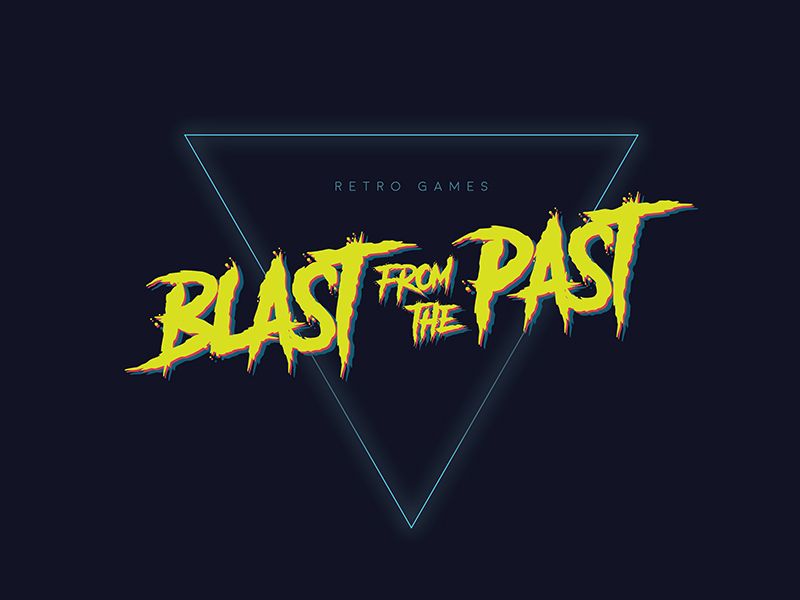Blast From the Past is one of our new regular features at Completexbox, it’s a chance to look at a game from the yesteryear era that’s featured on Xbox at some point, that may be via original Xbox Console, The Xbox 360, or via Xbox Live Arcade. The one thing that is key to this feature, is that game must be available to play via backward compatibility on Xbox Series X|S and Xbox One Consoles respectively.
In this walk down memory lane, we will be sharing our views of the game, our memories, lots of screenshots, and of course a link from the Xbox marketplace, so that you can add it to your game collection if you wish.
One thing we do hope, is that you enjoy the nostalgia, and the look back at the game of choice, maybe you can suggest a game for us to look at in the future that fits the bill of this feature.
Today’s Blast from The Past

This week’s chosen game is Tomb Raider Underworld. Another classic game from the 360 era, and still fully playable to this day. I grew up playing Tomb Raider games, first starting on PC, and then I moved on to console Tomb Raider gems.
I remember Tomb Raider Underworld fondly on the Xbox 360, I played through with my wife sat next to me enjoying every minute, the puzzles, the action, even the motorbike segments, classic gaming at it’s best!
The game is available to play via backward compatibility on Xbox Series X|S and Xbox One consoles respectively, and you can download it Here

Tomb Raider Underworld Features
- Master your surroundings: Reach new heights with the broadest range of acrobatic abilities and utilize objects within the environment to uncover new paths to explore
- Explore epic and unknown worlds: Discover ancient mysteries of the underworld hidden within the coast of Thailand, frozen islands of the Arctic Sea, the jungles of Mexico, and more
- What Can Lara Do?: Lara’s skill-set has been drastically expanded to incorporate actions you would expect of a fearless, athletic adventurer. Lara now performs 1700 moves and is a far more intuitive character to control
- Treacherous and unpredictable challenges: Each level is an elaborate multi-stage puzzle masked within an interactive environmental playground offering more flexibility over how the area is solved
- New range of combat options: Choose to pacify or kill, target multiple enemies at once with the new dual-target system, and shoot with one hand while suspended with the other
The Game
Tomb Raider: Underworld is the ninth game in the Tomb Raider series and the third game in the series developed by Crystal Dynamics, who later went on to produce the trilogy reboot series on Xbox One.
Tomb Raider: Underworld is the final game in the main story of the Legend Timeline. Designed specifically to take advantage of the latest technologies available at the time, Underworld represented a new advancement in exploration-based gameplay. Playing as Lara Croft our fearless adventurer you got to explore exotic locations from around the world, each designed with an incredible attention to to detail resulting in breathtaking high-definition visual fidelity that created a truly believable world and delivered a new level of challenge and choice to the series.

Tomb Raider: Underworld is a single player, action-adventure video game, following character Lara Croft’s adventures and journey. The story continues on from the events in Tomb Raider: Legend as a direct sequel, but also addresses unexplained plot elements by association with Tomb Raider: Anniversary.
Underworld was released by Eidos Interactive for Xbox 360, Playstation 3, Wii Nintendo DS and Microsoft Windows, releasing in North America on 18 November 2008, Europe on 21 November 2008 and Australia on 5 December 2008. A Playstation 2 port was released in Europe on 23 January 2009, with a US release on 3 March of that year. On 14 June 2012, Underworld was released on the Mac OS by Feral Interactive. Tomb Raider: Underworld is also the final Tomb Raider game to be released by Eidos Interactive; the rest of the series would be published by Square Enix after it acquired Eidos in late 2009.
Developers implemented new features into the gameplay, such as the dual-target feature and an upgraded inventory system, using an Active Sonar map and a multi-purpose grappling hook. The game also features a hint system and a new melee combat system where Lara has the ability to battle her opponents’ using kicks and grapple pulls. Downloadable content was also released for the Xbox 360, where the player takes control of Lara and her doppelganger in two new chapters.
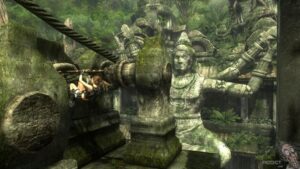
The Xbox 360, PlayStation 3, and PC versions of Underworld received mostly positive reviews. Critics generally praised the environments, Lara’s motion captured movements, story, puzzles, exploration, graphics and the less linear style of gameplay, although some criticism was directed at its “haywire” camera angles and “dodgy” combat system. The PlayStation 2 and Wii versions received mostly mixed to negative reviews. Most cited these versions as having medium to poor graphics; being oversimplified; “dumbed” down; and bugged, especially the PlayStation 2 version. On 27 February 2009, Eidos announced that the game had sold around 2.6 million copies worldwide. On 22 May 2009, Tomb Raider: Underworld was re-released as part of the Xbox Classics and Plantinum Range lines for Xbox 360 and PlayStation 3, respectively.
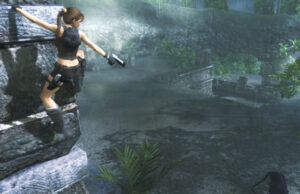
Gameplay
Tomb Raider: Underworld is a single player, action-adventure. The game is presented in third person perspective, where the player takes control of Lara Croft. Lara’s environment reproduces a more “interactive world that reacts and remembers”, such that footprints left in the mud or mud transferred to Lara’s knee from kneeling on the ground is washed away by rain, the bodies of the foes she encounters remain where she killed them, and any destruction to the environment she causes is permanent. According to creative director Eric Lindstrom, this is “to not only reward the player for the effect they’re having on the world, but to give them navigational aids.” The game uses an animation blending system that allows Lara to interact dynamically with her environment, such as pushing foliage aside with one or two hands, depending on if she is carrying a weapon. It also features a “hybrid lighting model that combines dynamic lights with carefully created light maps” and a weather system that changes the environment, for example, “If Lara’s negotiating a wet ledge, she’s more apt to slip or lose grip,” which makes “the environment […] her adversary” for a large part of the game.
Lindstrom explained that they integrated the elements of climbing, shooting and puzzle solving. This instalment also features a new melee combat system, requiring Lara in some instances to use “direct combat and evasive manoeuvres to distance herself from her attacker”. Notably, Lara’s bike, among other things, is a key component in solving the puzzles she will encounter in her adventure. Pick-ups have multiple uses as weapons and tools in interaction with the environment, and Lindstrom stated that Lara “can also split up her guns and fire at two different targets simultaneously,” or hold an item with one hand and fire a gun with the other. The grappling hook can be stretched taut and used to pull objects off ledges, illustrating what project lead Rob Pavey said, that “Lara will be able to do anything that you’d expect her to be able to do,” which he called “the big theme this year.” Lindstrom describes this as “a philosophy called ‘What Could Lara Do?’—WCLD. It’s shorthand for having the player be able to use their own intuition about what someone with her abilities should be able to do in an environment such as this, and consistency across the different mechanics and abilities. If she can throw a grenade, then if she can pick up this pole, why can’t she throw it?” Crystal Dynamics also made the game non-linear, offering elaborate multi-stage puzzles.
Another new design element was the “adrenaline moments”. Instead of specific button presses, time slows down and gives the player a chance to get out of harm’s way while retaining complete control of Lara.
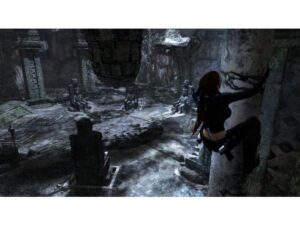
Story
Tomb Raider: Underworld begins with Lara Croft’s mansion exploding and being engulfed in flames. The game rewinds back in time to a week before the explosion, just after the events of Tomb Raider: Legend. Lara is searching for Avalon, hoping it will lead her to an explanation for the disappearance of her long-lost mother. Underneath the Mediterranean Sea, Lara discovers an ancient temple designating itself as “Niflheim”, one of the many Norse underworlds. Lara recovers one of Thor’s gauntlets after a lengthy battle with Amanda Evert’s mercenaries, and an encounter with an imprisoned Jacqueline Natla on Amanda’s ship. Natla tells Lara that the Norse underworld, Helheim, and Avalon are one and the same and that she will need to find Thor’s Hammer to open the Underworld and find her mother. Lara discovers that she will have to find Thor’s other gauntlet and his belt if she wants to find and wield the hammer. Natla provides Lara with a starting point for her search in this quest – coastal Thailand. In Thailand, Lara does not locate the next gauntlet, but she finds evidence that her father had retrieved it before he died. She also discovers a message that reveals her father and Natla had a working relationship which eventually soured. Lara is able to deduce where her father hid the missing gauntlet.
Back at the Croft Manor, Lara finds her father’s secret office buried beneath her home. Upon his desk, Lara discovers the gauntlet as well as a tape-recorded message, warning her that Helhiem contains a powerful weapon. An explosion occurs and Lara’s home becomes engulfed in flames, leading back to the opening events of the game. Zip tries to shoot Lara and claims that “Lara” detonated the bomb. When Lara returns to the burning office to recover the security footage, she encounters her doppelgänger who kills Alister Fletcher. After his death, Lara resolves to continue with her quest.
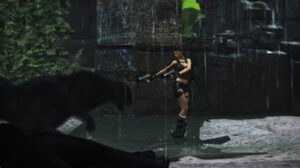
In Mexico, Lara finds both Thor’s Belt and ancient pictographs linking the weapon in Helheim to Jormungandr, a mythical Norse sea-serpent, brought about by the seventh age. Her next stop are ruins on Jan Mayen Island that correlate to Valhalla. It is here that Lara recovers Thor’s Hammer. In the meantime, Zip has managed to track Amanda down to a sister-ship of the one Lara sank earlier. Armed with Mjolnir, Lara boards the vessel and interrogates Natla once again. Natla provides Lara with the coordinates of Helheim but points out that Lara does not know the Ritual of Odin, which is needed to open its gates, so Lara reluctantly strikes a bargain with Natla and frees her from her cell.
They rendezvous in the outer chambers of the Helheim complex, deep below the Arctic Sea. With the ritual performed, Lara is able to use Mjolnir to open the gates of Helheim. Along the way, Lara discovers the horrifying truth of her mother’s fate – she has been turned into a thrall, thus Lara forcibly shoots her. Natla reveals the true extent of her manipulation of Lara, also revealing that she was responsible for killing Lara’s father. The doppelgänger prepares to kill Lara, but she is saved by Amanda. It is revealed that the Midgard Serpent was a Norse metaphor for the many tectonic divisions that encircle the world, beneath the seas. The doomsday device was built upon the most unstable junction of these lines and its activation would cause massive volcanic activity across the whole planet and the destruction of most of humanity. Lara successfully destabilizes the device and strikes Natla with Mjolnir, sending her down into the pool of deadly eitr below. Lara and Amanda escape together using the dais, like the one that brought Lara’s mother to Helheim, teleporting back to the temple in Nepal (from Tomb Raider: Legend). They go separate ways from there, and Lara moves on to new adventures.
Beneath the Ashes
After the main game, Lara searches her father’s hidden study beneath Croft Manor for an artifact with the power to create and control thralls. The appearance of a thrall leads Lara further beneath Croft Manor. Upon finding the artifact, Lara uses the phrase carved into it, “Okh Eshivar”, to gain control over a thrall. The doppelgänger suddenly appears and charges towards Lara. Lara orders the thrall to “kill”, but the doppelgänger easily destroys it. Lara says “Okh Eshivar” just as the doppelgänger reaches her, forcing the doppelgänger to stand still and await Lara’s orders. After an inaudible exchange between them, Lara tells the doppelgänger to “make sure Natla suffers”, as the doppelgänger runs off, apparently to complete this task.
Lara’s Shadow
After Amanda rescued Lara from the doppelgänger by throwing her over the side of a cliff, the doppelgänger survives by landing on solid rock rather than in the surrounding eitr. When she regains consciousness, she proceeds to find Natla. Appearing weakened and thrall-like, she retains her mind and uses “Okh Eshivar” to command the doppelgänger to take her to the doppelgänger’s “birthplace.” Once there, the doppelgänger places Natla in an ancient machine. Natla then gives the doppelgänger her final orders: to kill Lara and then end her own life, which the angered doppelgänger reluctantly obeys. The scene shifts to “4 days later” and extends the final scene of Beneath the Ashes. During their previously inaudible exchange, Lara questions the doppelgänger’s nature and ends by ordering her to ignore all commands and declaring that she is no one’s slave. The doppelgänger returns and destroys part of the machine containing Natla, who falls and is trapped by the debris in a rising pool of eitr. Natla unsuccessfully tries to order the now free doppelgänger to help her which only smiles as the former is submerged in the eitr.
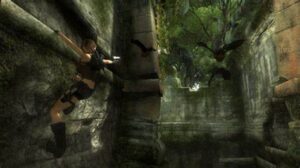
Developmental History
In November 2007, Eidos was reported to have filed for a trademark on the phrase, Tomb Raider: Underworld, and soon after reserved the Tomb Raider: Underworld domain name. In December 2007, Eidos filed for a second trademark for Tomb Raider: Underworld, reserving the right to provide “computer games that may be accessed network-wide by network users.” In the January 2008 issue of the magazine Play, details from the “first-ever demo” of the game were revealed. SCi, which owned Eidos at the time, officially announced Tomb Raider: Underworld on 10 January 2008, and confirmed that all platform versions of the game would be released simultaneously in November 2008.
Play‘s assertions that the game is the “first true next gen Lara with one big physics smorgasbord that looks altogether photo-real” led to speculation that Tomb Raider: Underworld might be using a new game engine for its next-generation graphics rather than the system used by Tomb Raider: Legend and Tomb Raider: Anniversary. Later, the Senior Producer and External Designer separately confirmed that Underworld uses an all-new engine that was built especially for it. This new engine is also used in the game Deus Ex: Human Revolution.

Tomb Raider: Underworld was developed by Crystal Dynamics and published by Eidos Interactive as the final Tomb Raider title to be published under the Eidos Interactive label prior to its purchase by Square Enix. Different versions of the game were developed by Crystal Dynamics, Buzz Monkey Software, Nixxes Software and Santa Cruz Games, all published by Eidos Interactive. Crystal Dynamics developed the Xbox 360 version and collaborated with Nixxes Software for the PC and Playstation 3 versions. Santa Cruz Games developed the Nintendo DS version, while the Wii and Playstation 2 versions were developed by Buzz Monkey Software. The Mac version was developed by Crystal Dynamics and released by Feral Interactive.
Lara’s costume was redesigned, and she no longer wears her trademark turquoise sleeveless top and khaki shorts, but instead, a dark brown halter top and black shorts. Additionally, her hair is no longer braided, but worn in a ponytail. According to Play, Lara “moves as good as she looks [and] no longer moves like a video game character” due to her being fully motion captured. Olympic gymnast and NCAA Women’s Gymnastics champion Heidi Moneymaker was the model used for motion capturing, and Keeley Hawes provided the voice of Lara in this instalment, as she did in Anniversary and Legend. Gymnast Alison Carroll was selected as the new official Lara Croft model to promote the game, replacing Karima Adebibe.
The first official video, entitled “Beneath the Surface”, was released on 17 July 2008, and featured interviews with members of the development team and showed screenshots, artwork, and several clips of gameplay footage. A teaser trailer was released on 19 July 2008, and the first gameplay trailer was released on 15 August 2008.
This concludes our look at Tomb Raider: Underworld, I hope you enjoyed it.

